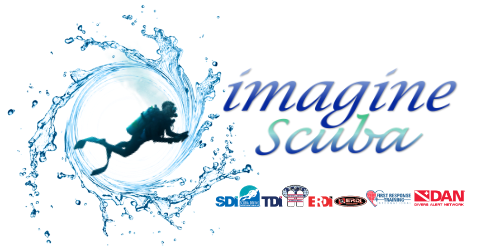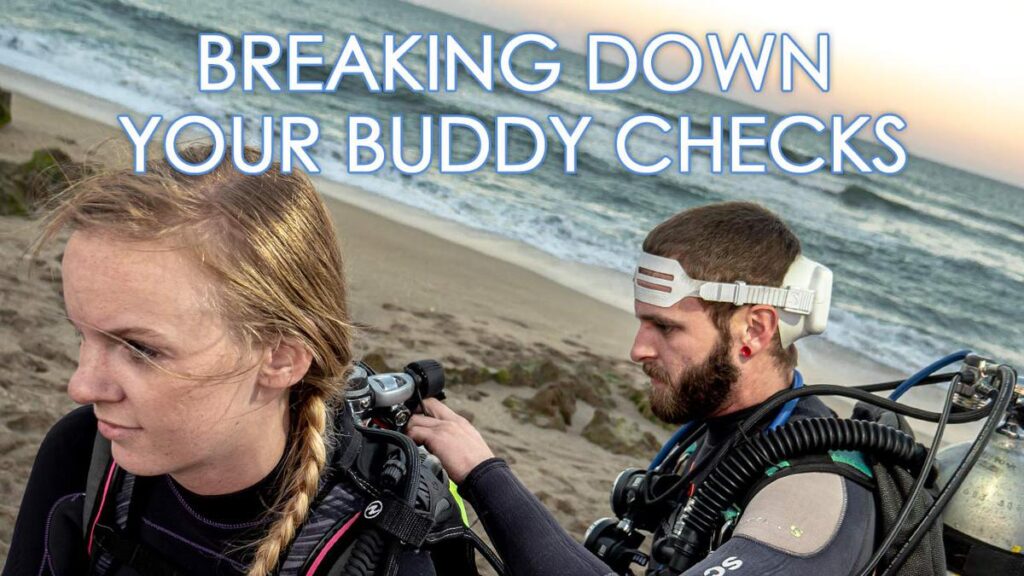There is a well-known quote in aviation: “A superior pilot uses his superior judgment to avoid situations which require the use of his superior skill.”
We can say something very similar for rescue divers.
“A superior rescue diver uses his superior judgment to avoid situations which require the use of his superior skill.” Another way to express this is “The best rescue is the one you don’t need to do”.
A rescue course should cover how to deal with equipment problems, but more importantly, it should cover how to avoid equipment problems.
In reality, equipment problems rarely occur without any build up or warning. Most equipment problems begin on the surface, sometimes well before the dive, and we then take that developing problem into the water with us. Eventually the problem comes to the fore and we act as if it was an unexpected emergency when in reality it was an avoidable problem.
Equipment preparation and our buddy checks are the key steps in avoiding these types of problems. Ensuring equipment is maintained, serviced, and assembled correctly is the foundation of avoiding equipment problems. The goal of a buddy check is to ensure your equipment and your buddy’s equipment is working and each of you know how to use each other’s emergency equipment if needed.
Buddy checks can prevent many of the common problems that cause accidents. Reviewing accident reports is a great way to see the types of issues that cause accidents. Many of these could have been caught by an effective buddy check and so by reviewing the mistakes of others you can become more effective at spotting problems such as:
– Air not turned on or not turned on fully
– Dry suit unzipped
– Wrong settings on dive computer
– Forgot to put on dive computer
– BCD or dry suit inflator not connected
– Backup or spare regulator tangled or not accessible
– BCD pull dump snagged
– BCD not holding gas
– Cylinder not fixed in BCD firmly enough.
– Dangling SPG, dsmb, or other equipment
One key mistake divers make is in thinking their role in the buddy check is to check their buddy’s equipment is OK. In fact, your job is to spot any mistakes they have made in assembling or putting on their equipment. This means that you should approach a buddy check by assuming there is a problem rather than assuming everything is ok. It might seem like a minor change in the wording but in reality, it’s a very powerful technique as we tend to see what we are looking for. If you assume there is a problem, you are more likely to spot that problem on the rare occasion when a problem does occur. On the other hand, if you assume there is no problem, you are less likely to spot a problem even if there is an issue.
This may seem like a lot of checks, but with practice, an experienced Rescue Diver will be able to do this very quickly. In fact, they can often tell that there is a problem with their buddy’s equipment with a single glance.
The second part of the buddy check is to ensure you know what to do if things go wrong. The value of this is that in an emergency the adrenaline is pumping, you are stressed, rushing and under pressure. This is not the time to try and work out how to operate a piece of equipment or to try and find how to access it. Instead, this can be done during the buddy check where you are calm, focused and have time to check where each piece of equipment is stored and how it works. This includes asking:
– Where is their backup reg?
– How does their BCD inflate/deflate work?
– Where are the clips to undo their BCD or wing?
– How do you dump their weight? How does the quick release work?
– If they use a harness, do either one of you have a suitable cutting device?
– What else do you need to release in order to fully de-kit them?
– If you have to deploy their dsmb, do you know how their reel/spool works?
Again, by doing this regularly you build up experience operating equipment that may be different to your own, and the more you do it the better and quicker you get at learning how to operate your buddy’s equipment.
This really comes into effect during the practical exercises. It is when you are trying to rescue a diver, perform a lift, de-kit an unconscious diver, or attract attention that you find all the problems and disadvantages of a particular piece of equipment.
Very often you will hear about a particular piece of equipment that sounds like a good idea in the dive shop or the online review, but it is not until you try to use it that you discover whether it is practical or not.
In addition to knowing your buddy’s equipment, a rescue course will also help you become more familiar with your own equipment. Divers often carry emergency equipment but do not regularly use it.
Can you get your knife out easily with one hand? Carrying a backup mask is a great idea but can you get it out of your pocket with no mask on? Backup masks often fog up which can add to the stress. Always consider defogging your backup mask at the same time as your primary mask. A spool is a common choice for a backup DSMB but if you are not familiar with a spool they can be difficult to operate – especially the first few times – and especially under stress. So, using a spool for the first time in an emergency situation is a bad idea.
If you carry any backup kit then make sure you practice with it often so you are comfortable using it in an emergency. I alternate between using my normal and backup DSMBs so that I am just as comfortable with my backup as I am with my primary.
Any potential problems or failures are more likely to occur during the additional stress of a rescue. If that fin strap is starting to wear it is more likely to snap during the additional exertion of a rescue than during a normal dive. In this case you are now dealing not just with one problem but with a second compounding issue.
Equally, a Rescue Course will help identify equipment issues that make things harder than they should be. If your reel regularly jams, you have a BCD inflator hose that is hard to disconnect or pops off too easily, or a buckle that regularly comes undone, then discovering that this will complicate your ability to deal with an emergency during your rescue course is preferable to discovering it during a real rescue. If it doesn’t work during practice rescues, then what are the chances that it will work during a real emergency?
Discovering these issues is one of the most useful aspects of any Rescue Course. Finding out there are issues with your equipment and knowing what you need to change and what you need to practice is invaluable. By getting the right equipment and being able to use your own and your buddy’s equipment can turn a rescue situation from a life-threatening situation with a tragic outcome into a successful rescue with a positive outcome and a great story to tell in the bar that evening. Even better, it can prevent that rescue situation from ever developing in the first place. It might not make such a good story in the bar, but it can make your dives much safer and more enjoyable.
We hope this article motivates divers of all experience levels to approach pre-dive buddy checks with a new perspective.
By: Mark Powell

